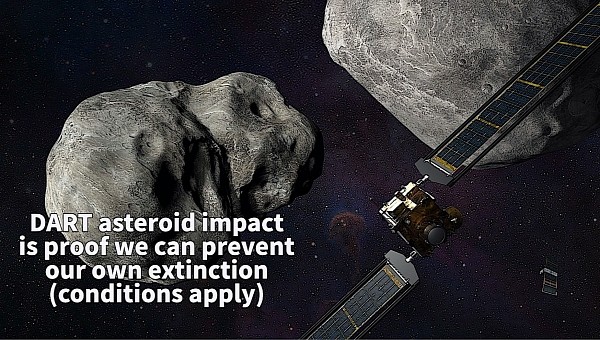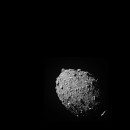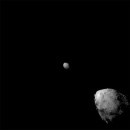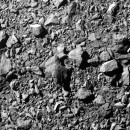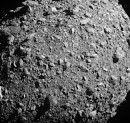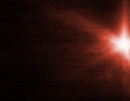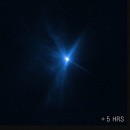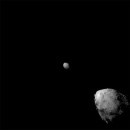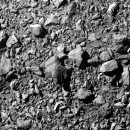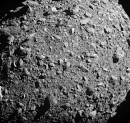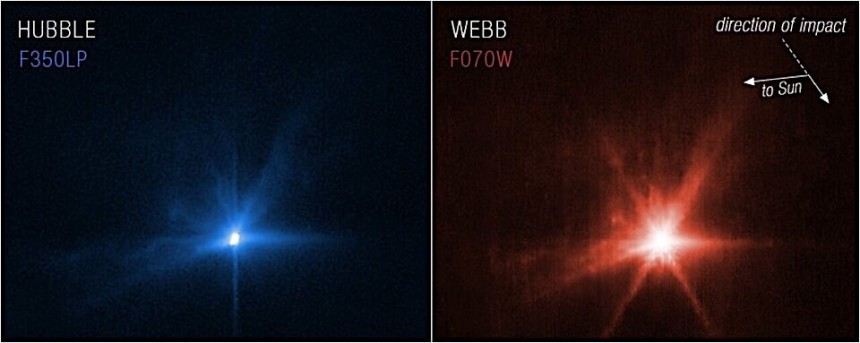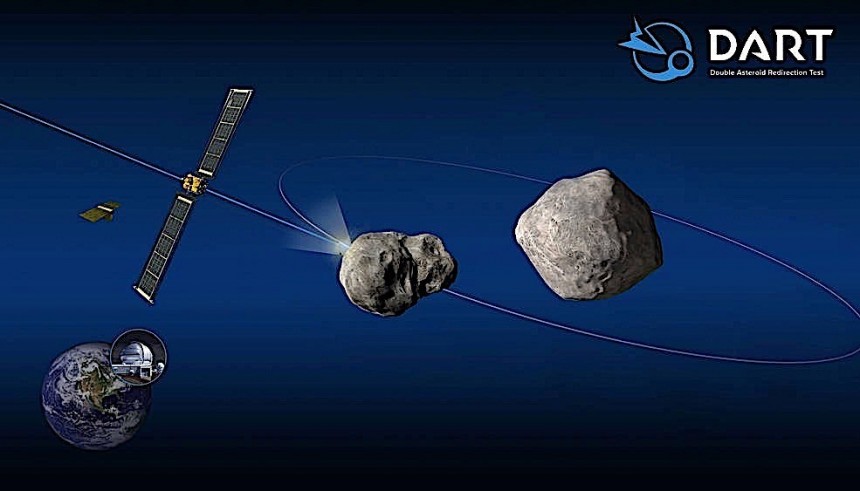Ever since the movie Armageddon hit the big screens back in 1998, some of us humans have been under the impression that should a planet-killer asteroid head our way, there are things we could do to stop it. But then, in 2021, NASA came out and showed us all how not even our most modern technologies and a decent amount of advance warning are not enough to save us.
Not even in the wake of the daunting results from the 2021 tabletop exercise (which eventually saw most of Europe obliterated by an asteroid) did NASA give up though on building some sort of a defense mechanism against killer rocks from space.
Unlike in Armageddon, where crewed spacecraft carrying nukes are sent into space to split up asteroid Dottie, NASA went for a more direct approach, that of a kinetic impactor. In the agency's own words, that would be “smashing a thing into another thing” to change its course.
We know this mission as the Double Asteroid Redirection Test (DART). It departed Earth in late 2021 and almost a year later, it reached its target, an asteroid pair comprising the smaller Dimorphos, which orbits the parent Didymos. These two pieces of floating rock pose no danger to our world, but they were selected to test how a kinetic impactor would work on an asteroid.
Sure, common sense would tell you that if you throw something really hard at an object, said object will, of course, suffer changes in trajectory, shape, and who knows what else. But this is space exploration we’re talking about here, so everything needs to be tested.
So DART reached its target, Dimorphos, back in September 2022 and slammed into it at speeds of 14,000 mph (22,530 kph). We know thanks to observations taken with the Hubble and James Webb space telescopes that the impact was massive.
As per the European space agency (ESA), the impact released into space 900,000 kg (almost two million pounds) of dust from the surface of the asteroid. And it also made the asteroid three times brighter than it usually is.
But did it work? That is, was Dimorphos’ trajectory changed enough for us to even consider kinetic impactors as a potential means of protecting ourselves from asteroid impacts?
We kind of knew it worked, thanks to the bits and pieces of info on the subject NASA released these past few months. But now that most of the data from the test have been analyzed by the extensive DART team, no less than three separate papers on the subject are out, making it crystal clear just how well the entire test worked.
The first thing worth mentioning is that the impact was so powerful it altered the orbit of Dimorphos around its parent by 33 minutes. This indicates that not only did the spacecraft hit the surface with such force to change its course, but also that ejecta added momentum to the change in orbit.
Furthermore, the asteroid’s speed in its orbit has changed as well, also on account of ejecta, with the piece of rock slowing down from its initial speed. True, the change is minor, at only 2.7 millimeters per second, but it is enough to point to how big of a role ejecta from an impact can have during such events: scientists have calculated that the recoil caused by material blasting out into space amplified DART’s own effects by a factor of 2.2 to 4.9.
But all of the above are numbers, and they’ll be totally different if NASA attempts to do this again. What one of the three papers of DART found is, however, of concern to us here: kinetic impactors work, but they’ll only save us if we have enough time at our disposal.
More to the point, DART has proven human-made impactor spacecraft can find incredibly small targets in the vastness of space with “limited prior observations,” and they can do that autonomously. And not only can they find them, but they also hit the ones with a diameter of just half a mile (0.8 km) just right to get the desired effects.
So, we’ve pretty much got the kinetic impactor thing sorted out, and it works. But there is still that major issue of knowing what’s coming.
You see, we knew for a while where the Dimorphos - Didymos pair was located in space, as they were first spotted in the 1990s. But as stated repeatedly by pretty much all those involved in the exploration of space, we’re still far from having an asteroid detection method in place that would guarantee us perfect safety.
In fact, say some of the researchers working on DART, for a kinetic impactor to work on an asteroid the size of Dimorphos we’d have to know it’s coming at least several years in advance, although a few decades would be even better.
There are several projects currently being built with these goals in mind, including the European Comet Interceptor, but they’re still some time away from being fully realized. And that means that, at least for now, we’ll have to settle for the knowledge that we could do something to stop an asteroid from hitting, but we must rely on luck to spot it in time.
Unlike in Armageddon, where crewed spacecraft carrying nukes are sent into space to split up asteroid Dottie, NASA went for a more direct approach, that of a kinetic impactor. In the agency's own words, that would be “smashing a thing into another thing” to change its course.
We know this mission as the Double Asteroid Redirection Test (DART). It departed Earth in late 2021 and almost a year later, it reached its target, an asteroid pair comprising the smaller Dimorphos, which orbits the parent Didymos. These two pieces of floating rock pose no danger to our world, but they were selected to test how a kinetic impactor would work on an asteroid.
Sure, common sense would tell you that if you throw something really hard at an object, said object will, of course, suffer changes in trajectory, shape, and who knows what else. But this is space exploration we’re talking about here, so everything needs to be tested.
As per the European space agency (ESA), the impact released into space 900,000 kg (almost two million pounds) of dust from the surface of the asteroid. And it also made the asteroid three times brighter than it usually is.
But did it work? That is, was Dimorphos’ trajectory changed enough for us to even consider kinetic impactors as a potential means of protecting ourselves from asteroid impacts?
We kind of knew it worked, thanks to the bits and pieces of info on the subject NASA released these past few months. But now that most of the data from the test have been analyzed by the extensive DART team, no less than three separate papers on the subject are out, making it crystal clear just how well the entire test worked.
Furthermore, the asteroid’s speed in its orbit has changed as well, also on account of ejecta, with the piece of rock slowing down from its initial speed. True, the change is minor, at only 2.7 millimeters per second, but it is enough to point to how big of a role ejecta from an impact can have during such events: scientists have calculated that the recoil caused by material blasting out into space amplified DART’s own effects by a factor of 2.2 to 4.9.
But all of the above are numbers, and they’ll be totally different if NASA attempts to do this again. What one of the three papers of DART found is, however, of concern to us here: kinetic impactors work, but they’ll only save us if we have enough time at our disposal.
More to the point, DART has proven human-made impactor spacecraft can find incredibly small targets in the vastness of space with “limited prior observations,” and they can do that autonomously. And not only can they find them, but they also hit the ones with a diameter of just half a mile (0.8 km) just right to get the desired effects.
You see, we knew for a while where the Dimorphos - Didymos pair was located in space, as they were first spotted in the 1990s. But as stated repeatedly by pretty much all those involved in the exploration of space, we’re still far from having an asteroid detection method in place that would guarantee us perfect safety.
In fact, say some of the researchers working on DART, for a kinetic impactor to work on an asteroid the size of Dimorphos we’d have to know it’s coming at least several years in advance, although a few decades would be even better.
There are several projects currently being built with these goals in mind, including the European Comet Interceptor, but they’re still some time away from being fully realized. And that means that, at least for now, we’ll have to settle for the knowledge that we could do something to stop an asteroid from hitting, but we must rely on luck to spot it in time.
